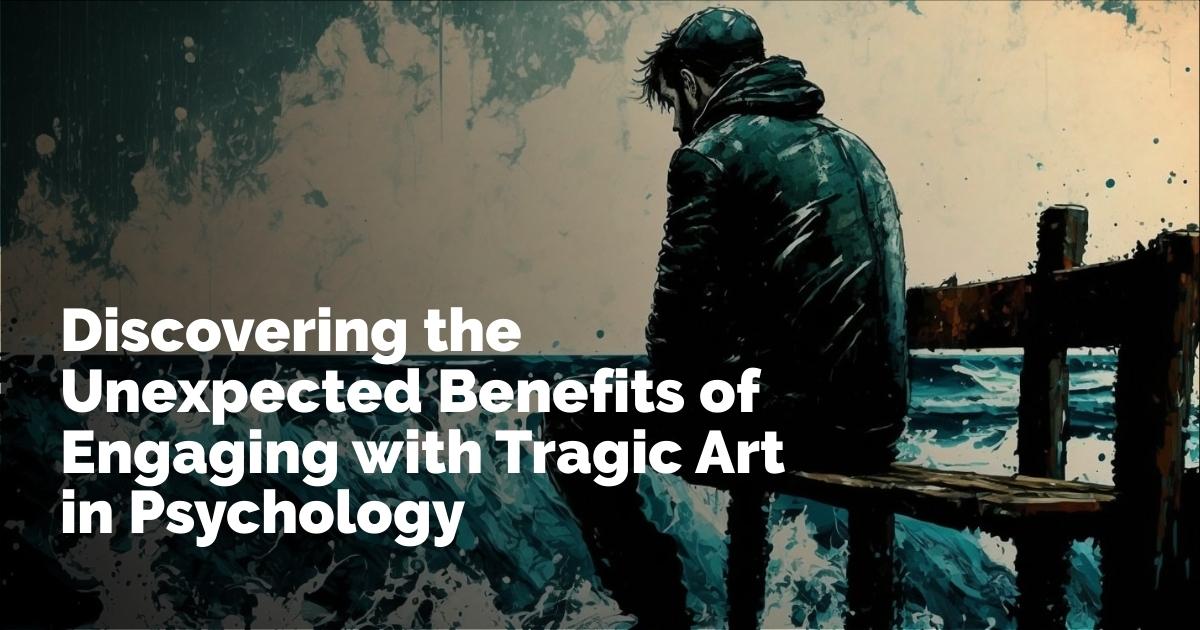New Psychology Research Unveils the Paradoxical Benefits of Tragic Art
Exploring the Allure of Tragic Art
Recent psychological research published in The Journal of Positive Psychology delves into the intriguing phenomenon of tragic art, particularly sculptures that depict the suffering of refugees. This study suggests that such art can invoke positive emotional responses and enhance empathy. By examining the emotional complexity and paradoxical enjoyment derived from tragic experiences in art, the researchers aimed to understand the deeper emotional impact and potential benefits of engaging with art that represents pain and suffering.
Understanding Our Draw to Tragic Art
Throughout history, art has provided a lens through which human suffering is portrayed—think of ancient tragedies and war memorials. Despite our natural tendency to avoid tragedy in our personal lives, we remain inexplicably drawn to art that confronts us with themes of loss and hardship. Motivated by this paradox, the research team sought to uncover why experiencing negative emotions through art can sometimes lead to positive outcomes, such as feeling inspired or moved, and whether these experiences foster compassion towards others.
Study One: Emotional Complexity in Viewing Tragic Art
In the first of two studies, the researchers recruited 150 English-speaking adults from diverse backgrounds across the United States. Participants were told they would be assigned to view one of three types of art videos: distressing sculptures of refugees, sculptures of everyday street scenes, or sculptures of joyful celebrations. In reality, all participants viewed videos depicting refugee sculptures.
Before watching the videos, participants reflected on two types of painful life experiences: one they chose themselves (such as running a marathon or undergoing significant medical treatment) and one they did not choose (like losing a loved one or experiencing trauma). They were asked to rate these experiences emotionally.
After viewing two short videos by sculptor Susan Clinard, which focused on themes of refugees and immigration, participants evaluated how moved they felt, the meaningfulness of the experience, and their emotional reactions. The study also assessed whether their attitudes towards refugees shifted.
Interestingly, people perceived their self-chosen painful experiences as more positive than unchosen ones, suggesting that self-selected pain can be reframed as meaningful. However, these preferences did not predict their inclination toward watching tragic art.
Finding Meaning in Mixed Emotions
Despite many participants expressing a preference for joyful or neutral videos, those who showed an inclination towards tragic art reported a greater sense of positivity afterward. Both positive and negative emotional responses were closely linked to feeling moved, indicating that emotionally challenging art can provide a complex yet rewarding experience. This highlights art's capacity to elicit multi-layered emotions, contributing to a reflective and enriching experience.
In terms of shifting attitudes towards refugees, the results of the first study were less definitive due to initial high baseline support for refugees, leaving limited room for attitude change.
Study Two: Emotional Influence on Empathy
The second study took a different approach by focusing on 150 politically conservative adults—chosen based on previous findings that suggest lower cognitive empathy among conservatives. Participants were similarly told they would watch one of three video types, but again, all viewed videos showcasing distressing refugee sculptures.
This study employed a modified version of the Immigrant Attitudes Scale to assess refugee-related perspectives both before and after viewing the videos. This scale incorporated statements reflecting both sympathetic and unsympathetic views, allowing researchers to identify any shifts in attitudes.
Consistent with the first study, individuals described their self-selected painful experiences in a more positive light compared to those not chosen. However, these ratings did not predict preference for tragic art.
When viewing the videos, participants experienced heightened emotions—both negative and positive—which were associated with feeling moved and finding the experience meaningful. The more intensely participants felt these emotions, the more they engaged deeply in reflection and thought.
A Significant Shift Toward Empathy
Importantly, the study discerned a notable shift in attitudes: after viewing the tragic art, participants reported more compassionate views towards refugees. This change was connected to the extent of their emotional response—whether positive or negative—demonstrating that emotionally charged experiences can enhance empathy.
Nonetheless, a preference for tragic art or general interest in art did not directly predict this change in attitude. Thus, it appears that the emotional journey itself is key to fostering empathy.
Art’s Role in Enhancing Compassion
Drake summarizes: “Viewing tragic art often results in both negative and positive affect. Our experiences of these emotions relate to how moving and meaningful we perceive the art. Ultimately, empathy for refugees increased after exposure to tragic art.”
The study reveals that tragic art can invite reflective and moving experiences, potentially fostering empathy towards marginalized groups. Despite these findings, the researchers acknowledge limitations, including the fact that both studies were conducted online, possibly affecting the intensity of emotional responses compared to physical art encounters. Moreover, the focus on video sculptures limits the findings to one art form, without giving participants a genuine option in art selection.
Future Directions in Tragic Art Research
For future exploration, researchers could investigate the impact of experiencing tragic art in a museum setting or through alternative media like film or literature. Longitudinal studies could assess whether the empathy garnered through art catalyzes enduring shifts in perspective. Additionally, examining personality or emotional processing differences may illuminate individual variances in attraction to tragic art.
As tragic art continues to captivate and challenge emotional boundaries, this research underscores its potential role in fostering human empathy and understanding—an invaluable asset in cultivating a more compassionate society.
출처 : Original Source

